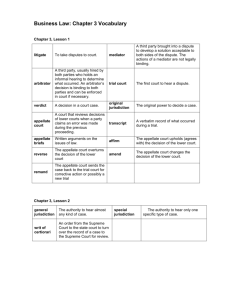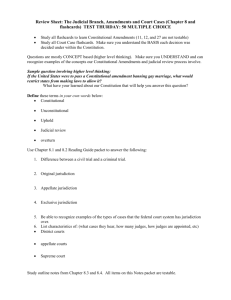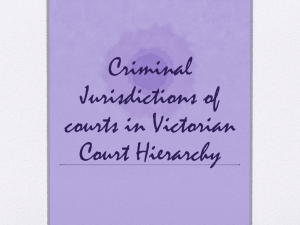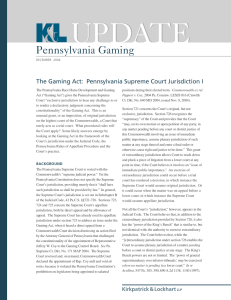The court hierarchy: civil disputes - Year 11
advertisement
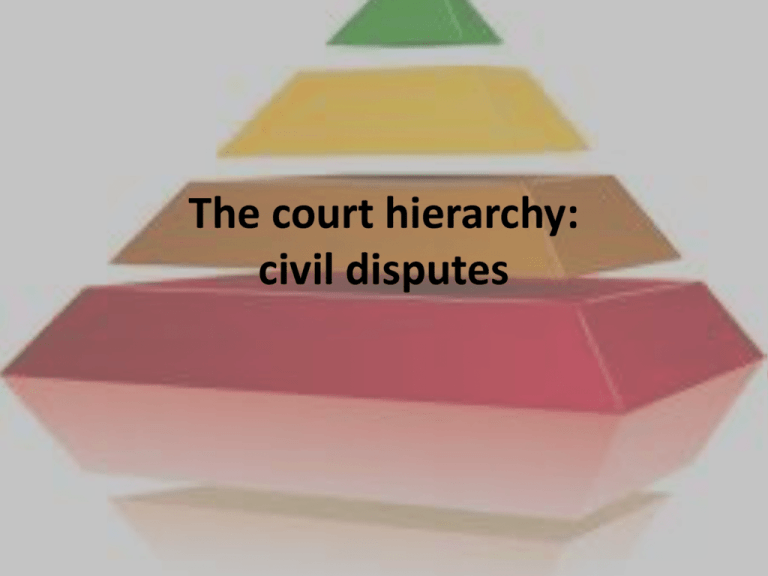
The court hierarchy: civil disputes The Hierarchy • Just like in criminal matters, the court hierarchy assists in resolving civil disputes. • Disputes should be referred to different courts on the basis of seriousness and the sum of money involved in the case. • Each court has its own original and appellate jurisdiction. • Generally, the lower the court, the less serious the case. • Magistrates= least serious allegations • Supreme Court= most complex civil disputes Magistrates • Hears civil cases involving contracts, torts and claims • Original jurisdiction: claims up to $100,000 (less than $10,000 referred to arbitration) • Appellate jurisdiction: none County Court • Original jurisdiction: Unlimited • Litigants can choose to have their case heard in either the Supreme or the County Court • Appellate jurisdiction: no appellate civil jurisdiction Supreme Court (trial division) • Original jurisdiction: unlimited; tends to hear the cases with substantial claims. • People can choose to have their case heard in the County or the Supreme Court • Appellate jurisdiction: appeals on points of law from the Magistrates’ Court and VCAT Supreme Court (Court of Appeal) • Original jurisdiction: no original jurisdiction • Appellate jurisdiction: Appeals from the County or Supreme Court on a point of law, decisions as to facts or amount of damages Specialist courts • Children’s Court: hears cases concerning people aged under 17 years. • Family Court: Federal court- hears applications for divorce, parenting orders, spousal and child maintenance and custody • Federal Court: hears cases involving particular federal laws (trade practices etc) Reasons for a court hierarchy • Expertise- courts can specialise (ie Family Court) • Efficient use of resources- personnel trained in certain areas • Appeals- if a person is dissatisfied with a decision they can take it to a higher court. • Precedent- a higher courts sets the precedent for the lower courts.

